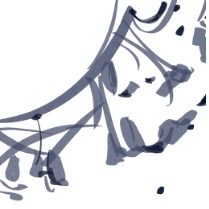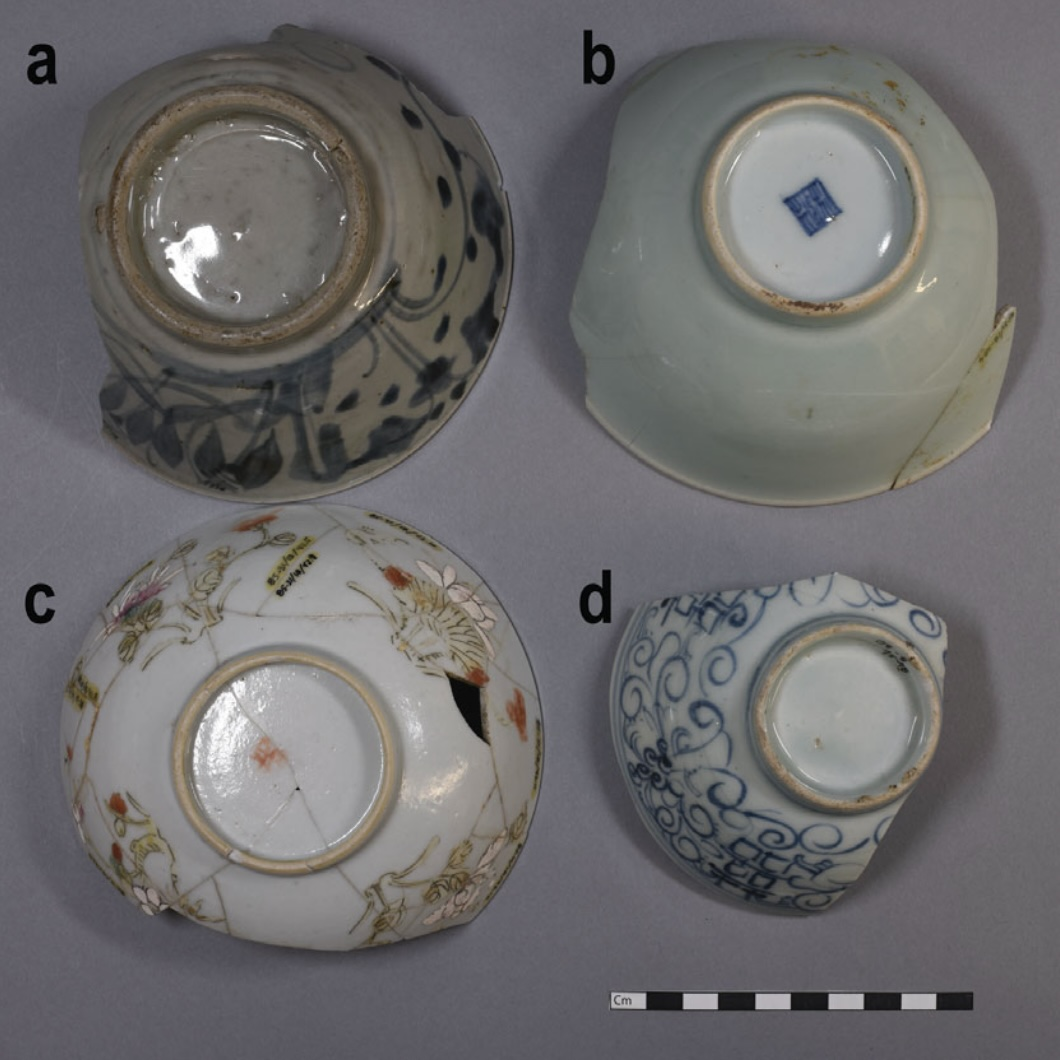Sherds of tableware ceramics (bowls, cups, plates, serving dishes, etc.) from Qiaoxiang (侨乡, Cangdong Village) provide valuable insights into the trade networks, dining customs, and aesthetic preferences of Chinese migrants and their home villages. Although most tableware ceramics found at Qiaoxiang were Chinese porcelains, a significant presence of British earthenware was also discovered (Voss et al. 2019). These distinct collections express a difference between domestic and diasporic material cultures: Chinese migrant workers relied on polychrome overglaze vessels and winter-green ceramics, whereas Qiaoxiang residents favored locally produced blue-on-white ceramics (Voss et al. 2019). Inspired by the latent stories of these ceramic sherds, I created and formed fragmented decorative pattern motifs into new shapes, including Bamboo 竹 (Figure 18), Four-Season Flowers, Double Happiness (Figure 24), and Winter Green. These patterns reflect visual motifs, which were common at Chinese railroad worker sites on the U.S. Transcontinental Railroad route.
Bamboo is one of the most common decorative patterns found at nineteenth century Chinese diaspora sites worldwide (Figure 22). Bamboo patterns most frequently appear on medium-sized bowls. The bamboo patterns recovered at Qiaoxiang are identical to those found at Chinese railroad worker sites in North America and other diaspora locations (Voss et al. 2019). These bamboo patterns inspired me to created two new hand-drawn patterns (Figures 19 and 20). I then combined, remixed, and rearranged the drawings to create Ceramic Sherds: Bamboo 竹 (Figure 18). Bamboo is a deeply revered symbol in Chinese culture, often representing resilience, flexibility, and strength. The Chinese railroad workers embodied these same qualities of resilience and strength in the face of adversity—qualities symbolized by bamboo.
< Previous
“The life histories of objects and people cannot be collected separately, for people and the things they cherish are intertwined in complex ways that are difficult to disentangle.”
–– Leeb-du Toit, Simbao, & Anthony, 2022
Figure 22: China-produced ceramic tableware patterns commonly found at Chinese diaspora settlements. (a) Bamboo; (b) Winter Green; (c) Four Season Flowers; (d) Double Happiness (Photo courtesy of the Market Street Chinatown Archaeology Project, Voss, et al. 2018: 416)
Figure 23: Winter green porcelain rice bowl. The base markers markis similar to those commonly found in North American archaeological sites (Voss, 2016: 168). Figure 21 is my digital recreation (drawing) of this blue stylized regional mark.
Next >





